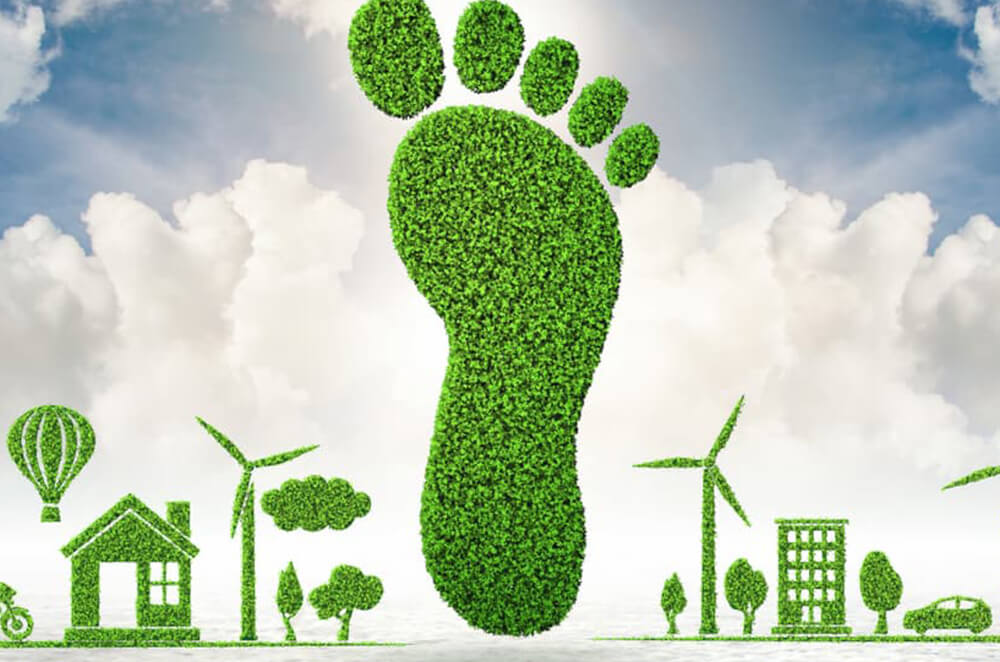
Eco Footprint: What it is, and how to measure and reduce it
Fecha: 11/03/2024
The ecological footprint is a way of measuring the impact that we as individuals have on the planet. Everyone, without exception, leaves a daily trace: we consume products and services, generate waste, and contribute to carbon emissions every time we drive or turn on the air conditioning. Understanding and calculating our ecological footprint can motivate us to lead a more environmentally friendly life.
The concept of the ecological footprint was created in 1996 by William Rees and refers to the ecologically productive land area needed to produce the resources consumed by an individual, as well as the area needed to absorb the waste generated.
In other words, it's the total limited resources of the planet required to maintain our lifestyle. A significant part of this footprint is related to carbon emissions, but it also includes land use for agriculture, freshwater use, and the impact of products derived from trees, among many others.
Why does my ecological footprint matter?
If our environmental footprint is tied to our lifestyle, estimating it can help us develop more sustainable habits, like recycling, consuming local products with a lower carbon footprint, and using the car more consciously. A sustainable ecological footprint is one that, if generalized for everyone, would not exceed the planet's capacity.
Just as we can calculate individual environmental footprints, this measure also serves as an indicator of sustainability on an international scale. That's why we know that some countries have a larger eco footprint than others. In Latin America, for example, Mexico and Colombia have the largest environmental footprint, followed by Peru, Argentina, and Ecuador.
How to measure and reduce your ecological footprint
The ecological footprint is expressed in global hectares (gha) and is measured by subtracting the resources each individual consumes in a year from those the planet generates in the same period.
There are several online calculators that, through a series of questions about your habits, allow you to measure your individual ecological footprint. You can try the Global Footprint Network calculator or the one developed by Climate Hero.
4 ways to reduce your environmental footprint
As we've mentioned, everyone's ecological footprint is linked to their lifestyle. That's why small changes in our habits can help limit our carbon emissions and reduce our ecological footprint.
- Recycle and reuse
Both practices help minimize the consumption of natural resources and the generation of waste. It's important to consume products that are recyclable and learn how to recycle them correctly. Additionally, it's ideal to choose to reuse, repair, and give new life to items we already have before buying new ones.
Moreover, recycling also saves on electricity and water, and therefore on CO2 emissions, as producing goods from recycled materials is less resource and carbon intensive than producing goods from raw materials.
- Watch your diet
Various studies confirm that reducing our consumption of meat and dairy products could significantly reduce our carbon footprint. The recommendation is to adopt a diet where non-animal-derived foods take center stage.
Furthermore, we can reduce our environmental footprint by consuming local and seasonal products, because their carbon footprint is much lower.
- Be energy-efficient
Beyond opting for more sustainable energy sources, such as solar panels, we can all make small changes in our daily habits to make our energy consumption more efficient and, therefore, more environmentally friendly.
Choosing LED bulbs, using air conditioning moderately, turning off and unplugging appliances when not in use, running the washing machine and dishwasher on shorter, cold water cycles – all these are simple ways to improve our energy consumption and, in turn, our environmental footprint.
- Less car, more public transport
Transportation is one of the sectors that generates the most emissions. In regions like Latin America, cars are practically indispensable. If we can't live without them, we can find ways to use them efficiently; for example, sharing the daily commute to work or university with others, so instead of 3 or 4 cars, only one is used.
It's also true that transportation networks in many countries in the region have improved considerably, making public transport a viable option for many. Another way to minimize car use is by organizing your routine so that your main daily trips are short enough to be done on foot or by bicycle.
Of course, taking care of the environment in a general sense, that is, not polluting and leaving natural spaces as we find them, is also a way to improve our ecological footprint. Ultimately, there is a lot that we can enhance if we just take a moment to think about the impact of our actions on the environment.
